
Content
Welcome to the Club of Amsterdam Journal.
In a good computer game you will discover new rules when you reach a higher level. If you’re stuck in a game, most of the time it is because you thought you knew the rules. And then you discover a new rule that can bring you further’ – Jim, 11 years old
Join our next Season Event about the future of Children on Thursday, May 29!
Felix Bopp, editor-in-chief
Confronting the Challenges of Participatory Culture: Media Education for the 21st Century

By Henry Jenkins, Director of the Comparative Media Studies Program at the Massachusetts Institute of Technology with Katie Clinton, Ravi Purushotma, Alice J. Robinson and Margaret Weigel
Executive Summary
According to a recent study from the Pew Internet & American Life project (Lenhardt & Madden, 2005), more than one-half of all teens have created media content, and roughly one third of teens who use the Internet have shared content they produced. In many cases, these teens are actively involved in what we are calling participatory cultures. A participatory culture is a culture with relatively low barriers to artistic expression and civic engagement, strong support for creating and sharing one’s creations, and some type of informal mentorship whereby what is known by the most experienced is passed along to novices.A participatory culture is also one in which members believe their contributions matter, and feel some degree of social connection with one another (at the least they care what other people think about what they have created).
Forms of participatory culture include:
Affiliations — memberships, formal and informal, in online communities centered around various forms of media, such as Friendster, Facebook, message boards, metagaming, game clans, or MySpace).
Expressions — producing new creative forms, such as digital sampling, skinning and modding, fan videomaking, fan fiction writing, zines, mash-ups).
Collaborative Problem-solving — working together in teams, formal and informal, to complete tasks and develop new knowledge (such as through Wikipedia, alternative reality gaming, spoiling).
Circulations — Shaping the flow of media (such as podcasting, blogging).A growing body of scholarship suggests potential benefits of these forms of participatory culture, including opportunities for peer-to-peer learning, a changed attitude toward intellectual property, the diversification of cultural expression, the development of skills valued in the modern workplace, and a more empowered conception of citizenship. Access to this participatory culture functions as a new form of the hidden curriculum, shaping which youth will succeed and which will be left behind as they enter school and the workplace.
Some have argued that children and youth acquire these key skills and competencies on their own by interacting with popular culture.Three concerns, however, suggest the need for policy and pedagogical interventions:
The Participation Gap — the unequal access to the opportunities, experiences, skills, and knowledge that will prepare youth for full participation in the world of tomorrow.
The Transparency Problem — The challenges young people face in learning to see clearly the ways that media shape perceptions of the world.
The Ethics Challenge — The breakdown of traditional forms of professional training and socialization that might prepare young people for their increasingly public roles as media makers and community participants.Educators must work together to ensure that every American young person has access to the skills and experiences needed to become a full participant, can articulate their understanding of how media shapes perceptions, and has been socialized into the emerging ethical standards that should shape their practices as media makers and participants in online communities.
A central goal of this report is to shift the focus of the conversation about the digital divide
from questions of technological access to those of opportunities to participate and to develop the cultural competencies and social skills needed for full involvement. Schools as institutions have been slow to react to the emergence of this new participatory culture; the greatest opportunity for change is currently found in afterschool programs and informal learning communities. Schools and afterschool programs must devote more attention to fostering what we call the new media literacies: a set of cultural competencies and social skills that young people need in the new media landscape. Participatory culture shifts the focus of literacy from one of individual expression to community involvement.The new literacies almost all involve social skills developed through collaboration and networking.These skills build on the foundation of traditional literacy, research skills, technical skills, and critical analysis skills taught in the classroom.
The new skills include:Play — the capacity to experiment with one’s surroundings as a form of problem-solving Performance — the ability to adopt alternative identities for the purpose of improvisation and discovery
Simulation — the ability to interpret and construct dynamic models of real-world
processes
Appropriation — the ability to meaningfully sample and remix media content
Multitasking — the ability to scan one’s environment and shift focus as needed to salient details.
Distributed Cognition — the ability to interact meaningfully with tools that expand mental capacities
Collective Intelligence — the ability to pool knowledge and compare notes with others toward a common goal
Judgment — the ability to evaluate the reliability and credibility of different information sources
Transmedia Navigation — the ability to follow the flow of stories and information across multiple modalities
Networking — the ability to search for, synthesize, and disseminate information
Negotiation — the ability to travel across diverse communities, discerning and respecting multiple perspectives, and grasping and following alternative norms.
Fostering such social skills and cultural competencies requires a more systemic approach to media education in the United States. Everyone involved in preparing young people to go
out into the world has contributions to make in helping students acquire the skills they need
to become full participants in our society. Schools, afterschool programs, and parents have
distinctive roles to play as they do what they can in their own spaces to encourage and nurture these skills.
The full White Paper is available as a *.pdf click here
Next Event

the future of Children
Learning to Play – How kids today are shaping the future of a participatory culture.
A Co-Production with the Waag Society – Creative Learning Lab
Thursday, May 29, 2008
Registration: 18:30-19:00, Conference: 19:00-21:15
Where: Pakhuis de Zwijger, Piet Heinkade 179, second floor, 1019 HC Amsterdam
The speakers and topics are
Yumiko Mori, President, Pangaea
Collaborative tools for intercultural communication program
Development through interactions with children
Dennis Kaspori, Architect, founding member, The Maze Corporation
Face Your World, Slotervaart?
Ronald Hünneman, Philosopher
Self City
Moderated by Adriaan Wagenaar, consultant, coach, writer & concept developer, SATORI
We would like to thank our supporter Innergy Creations
Club of Amsterdam blog
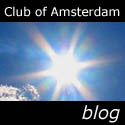
| Club of Amsterdam blog June 9 : Pakistan in the 21st Century: Vision 2030 May 24: Beyond Innovation May 24: What future coal? April 9: The Fall of the US Empire |
News about the Future

Compressed Air Energy Storage
The use of compressed air for storing energy is a method that is not only efficient and clean, but also economical. In 1973 CAES (Compressed Air Energy Storage) installed their first compressed air energy storage plant in Germany, making use of natural underground caves for compressed air storage and taking advantage of the surplus energy produced by the generating plants.
Tata Motors of India planned to launch an MDI air car in [?] 2008. MDI is a small, family-controlled company located at Carros, near Nice (Southern France) where Mr. Guy Nègre and Mr. Cyril Nègre, together with their technical team, have developed a new engine technology with the purpose of economising energy and respect severe ecological requirements – at competitive costs.

| Russia – communication is all Source Euromonitor The number of mobile phone users in Russia has grown by 757% between 2002 and 2007. This equates to a nationwide penetration rate of 106.2% in 2007. The level in Russia’s two largest markets – Moscow and St. Petersburg – stood at 156% and 139% respectively in 2006 according to AC&M Consulting. There is also a wide discrepancy in ownership based on income, with over 87% of high-income earners using mobile phones compared with just 41% of low-income earners. Over summer, many people move to their summer homes in the country, boosting mobile phone subscriptions. As the majority of the time is spent outside the house in the garden, it becomes difficult to reach a person through landlines. |
ICT often overlooked in carbon reduction initiatives
A new Economist Intelligence Unit study explores how information and communications technology (ICT) can be used to reduce organisations’ carbon-dioxide emissions
Information and communications technology (ICT) can do much to help companies achieve their carbon reduction targets, particularly by enabling them to connect international operations while reducing the need for executives to travel. Yet a survey* by the Economist Intelligence Unit, sponsored by AT&T and Cisco, found that most corporate carbon reduction strategies ignore the role of ICT in achieving these targets.
Of the 345 C-level executives polled for this survey, 18% say their companies have a carbon reduction strategy, and a further 39% are in the process of developing one. Of those that have a carbon reduction strategy, or are in the process of developing one, nearly half say that no mention is made of ICT. This is surprising given that the majority of those polled believe that senior management is aware of the potential of ICT to help achieve carbon-reduction goals.
It is clear from this survey that IT chiefs are well positioned inside their companies to promote the green benefits of ICT. While most survey panellists agree that the CIO should not lead carbon reduction initiatives, they should at least play an important consultative role in advising on the best use of technology to cut emissions. However, at present, only half the organisations polled by the Economist Intelligence Unit said the CIO is consulted when it comes to developing the company’s carbon reduction strategy.
According to Robin Bew, Editorial Director at the Economist Intelligence Unit, “There is a lot of talk about reducing carbon footprints in today’s organisations, but not much action. Putting technology to work in this endeavour offers a simple, effective way to move from rhetoric to action,” he says.
“It is interesting to discover that many organisations do not fully take advantage of the CIO’s strategic role in tackling carbon emissions,” says Phil Smith, European vice president of marketing at Cisco. “Through this report, we can learn more about the attitudes in these organisations and how businesses can reduce carbon emissions by adopting ICT solutions.”
“While the topic of ‘Green ICT’ has been high on the agenda in the ICT industry for some time, this report shows that the CIO has an important role to play in the development of a company’s carbon reduction initiatives,” says Lloyd Salvage, Vice President, Global Segment Marketing at AT&T. “The report also shows that ICT can make a real difference.”
Other key findings of the report include the following:
- Pressure to change. Most companies say that the pressure to be more green is coming from government and customers. Contrary to what many people believe, very little pressure is coming from shareholders and employees.
- Web and video conferencing are the most popular technology tools for reducing the organisation’s carbon footprint. Part of the attraction of audio, video and web-conferencing is that it is easy to measure the resulting reduction in air or car miles following its adoption. In terms of an internal environmental audit, this makes conferencing an attractive technology compared with other initiatives which may not deliver such direct benefits.
- Home-working is not widely adopted, despite the tools being available to make it possible. However, Braden Allenby, professor of civil and environmental engineering at Arizona State University, has found that a lot of home working goes on under the radar. Indeed, home working is often ad-hoc and given as a perk to select individuals, but most survey respondents believe that many more people will work from home in two years’ time.
Download the full report:
Managing the company’s carbon footprint: The emerging role of ICT click here
Recommended Book
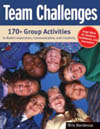
Team Challenges: 170+ Group Activities to Build Cooperation, Communication, and Creativity
by Kris Bordessa (Author)
Grades 3-8. This helpful resource provides educators and counselors a wide variety of activities designed to cultivate teamwork. Students are required to think outside the box, communicate clearly, and cooperate with each other in order to complete team assignments. Examples of activities include: moving a pile of ping-pong balls from one location to another, building a bridge out of marshmallows and toothpicks, and creating a miniature amusement park. Students learn from each other and from observing students on other teams.
The Rosetta Project
Fifty to ninety percent of the world’s languages are predicted to disappear in the next century, many with little or no significant documentation.
The Rosetta Project is a global collaboration of language specialists and native speakers working to build a publicly accessible digital library of human languages. Since becoming a National Science Digital Library collection in 2004, the Rosetta Archive has more than doubled its collection size, now serving nearly 100,000 pages of material documenting over 2,500 languages — the largest resource of its kind on the Net.
A major concern of our project is the drastic and accelerated loss of the world’s languages. Just as globalization threatens human cultural diversity, the languages of small, unique, localized human societies are at serious risk. In fact, linguists predict that we may lose as much as 90% of the world’s linguistic diversity within the next century. Language is both an embodiment of human culture, as well as the primary means of its maintenance and transmission. When languages are lost, the transmission of traditional culture is often abruptly severed meaning the loss of cultural diversity is tightly connected to loss of linguistic diversity. To stem the tide and help reverse this trend, we are working to promote human cultural and linguistic diversity, as well as to make sure that no language vanishes without a trace.
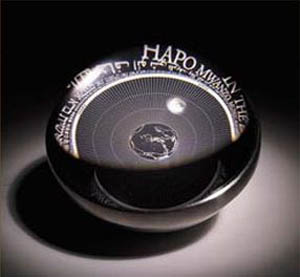
The Rosetta Disk
The Rosetta Disk is the physical companion of the Rosetta Digital Language Archive, and a prototype of one facet of The Long Now Foundation’s 10,000-Year Library. The Rosetta Disk is intended to be a durable archive of human languages, as well as an aesthetic object that suggests a journey of the imagination across culture and history. We have attempted to create a unique physical artifact which evokes the great diversity of human experience as well as the incredible variety of symbolic systems we have constructed to understand and communicate that experience.
The Disk surface shown here, meant to be a guide to the contents, is etched with a central image of the earth and a message written in eight major world languages: “Languages of the World: This is an archive of over 1,000 human languages assembled in the year 02002 C.E. Magnify 1,000 times to find over 15,000 pages of language documentation.” The text begins at eye-readable scale and spirals down to nano-scale. This tapered ring of languages is intended to maximize the number of people that will be able to read something immediately upon picking up the Disk, as well as implying the directions for using it—‘get a magnifier and there is more.’
On the reverse side of the disk from the globe graphic are 15,000 microetched pages of language documentation. Since each page is a physical rather than digital image, there is no platform or format dependency. Reading the Disk requires only optical magnification. Each page is .019 inches, or half a millimeter, across. This is about equal in width to 5 human hairs, and can be read with a 500X microscope (individual pages are clearly visible with 100X magnification).
The 15,000 pages in the collection contain documentation on over 2500 languages gathered from archives around the world. For each language we have several categories of data — descriptions of the speech community, maps of their location(s), and information on writing systems and literacy. We also collect grammatical information including descriptions of the sounds of the language, how words and larger linguistic structures like sentences are formed, a basic vocabulary list (known as a “Swadesh List”), and whenever possible, texts. Many of our texts are transcribed oral narratives. Others are translations such as the beginning chapters of the Book of Genesis or the UN Declaration of Human Rights.
The Rosetta Disk is held in a four inch spherical container that both protects the disk as well as provides additional functionality. The container is split into two hemispheres with the three inch Rosetta Disk sitting in an indent on the flat meeting surface of the two hemispheres. The upper hemisphere is made of optical glass and doubles as a 6X viewer, giving visual access deeper into the tapered text rings. The bottom hemisphere is high-grade stainless steel. We have machined a hollow cylinder into the bottom hemisphere that holds a stainless steel ribbon for disk caretakers to etch their names, locations, and dates – hopefully creating a unique pedigree for each Rosetta object as it travels through time and human hands. A small punch tool is included for future caretakers to add additional information.
At the very least, the Rosetta Disk provides an informative overview of human linguistic diversity in 02000. However, it may do much more. The translations on the disk, for example, are a close analog to the Rosetta Stone, whose parallel texts (in this case unintentionally) enabled the decipherment of Egyptian Hieroglyphics. It isn’t a great stretch to imagine that the language information on this Disk could provide the key to the (re)discovery of valuable society sustaining knowledge far into the future.
The Rosetta Disk is being designed and developed through the collaboration of artists, designers, linguists and archivists including Kurt Bollacker, Stewart Brand, Paul Donald, Jim Mason, Kevin Kelly, and Alexander Rose. Primary funding for the first Rosetta Disk and the project that grew out of it came from the generous support of Charles Butcher and the Lazy Eight Foundation.

Waag Society – Creative Learning Lab
At the Creative Learning Lab we see learning as a combination of factors. Play, creation, experience, performance, and showing what is meaningful to the modern youth. Learning in such a way that it matches their lifestyle, with the use of computers, mobiles or other gadgets that they already use on a daily basis together with their friends and classmates. In reality, learning takes place everywhere. In the classroom of course, but especially outside of the classroom, via the internet, exploring a museum or roaming the city with a mobile.
The Creative Learining Lab stimulates educational institutes to integrate digital technology in their classes. The Creative Learning Lab develops prototypes of digital educational methods and gives teacher training and workshops to support them in using it. The Creative Learning Lab brings together all the stakeholders in the education sector. The Creative Learning Lab is part of Waag Society.
www.waag.org
Futurist Portrait: Paul Saffo

Paul Saffo is a forecaster and essayist with over two decades experience exploring long-term technological change and its practical impact on business and society. He currently teaches at Stanford University and is a fellow of the Royal Swedish Academy of Engineering Sciences. He was the founding chairman of the Samsung Science Board and serves on a variety of other boards including the Long Now Foundation and the Singapore National Research Foundation Science Advisory Board. He is also an advisor to 3i Venture Capital and has served as an advisor and Forum Fellow to the World Economic Forum. He is on a research sabbatical from Institute for the Future where he has worked since 1985. Paul’s essays have appeared in numerous publications, including The Harvard Business Review, Fortune, Wired, The Los Angeles Times, Newsweek, The New York Times,and the Washington Post. Paul is also a columnist for ABCNews.com, writing on technology and innovation issues. Paul holds degrees from Harvard College, Cambridge University, and Stanford University.
A chat with Silicon Valley futurist, Paul Saffo, that took place at the AlwaysOn Stanford Innovation Summit in 2006.
Agenda
| Tickets also include Indian dishes and some drinks! July 3 18:30 – 23:30 Taste of Diversity the future of INDIA Location: Cultuurhuis Diamantslijperij, Tolstraat 129, 1074 VJ Amsterdam former Royal Asscher Diamond Factory |
| May 29 18:30-21:15 | the future of Children Learning to Play Location: Waag Society, Nieuwmarkt 4, 1012 CR Amsterdam | |
| June 26 18:30- | Taste of Diversity – the future of INDIA |
Club of Amsterdam Open Business Club
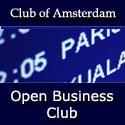
Club of Amsterdam Open Business Club
Are you interested in networking, sharing visions, ideas about your future, the future of your industry, society, discussing issues, which are relevant for yourself as well as for the ‘global’ community? The future starts now – join ouronline platform …






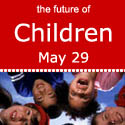



Customer Reviews
Thanks for submitting your comment!